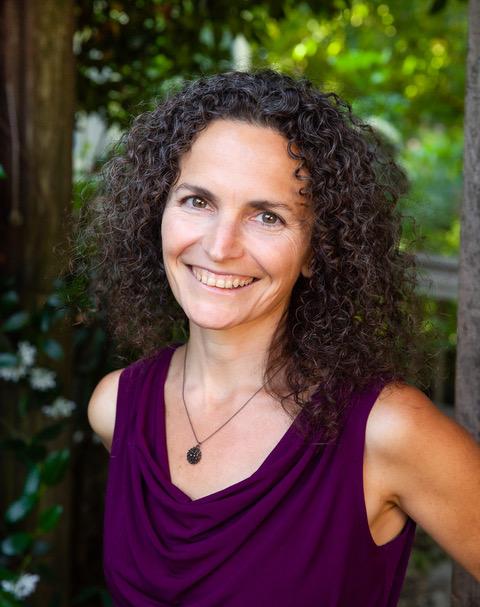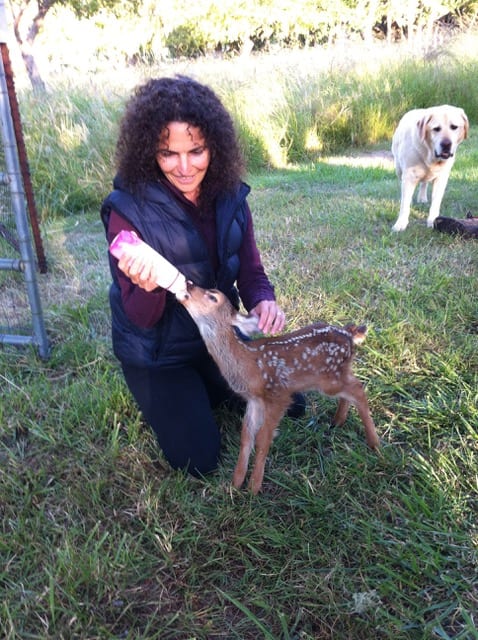
Today SevenPonds speaks with Susan Wilmoth, a nationally certified acupuncturist whose private practice is based in east Portland, Oregon. Besides treating patients suffering from pain and stress in order to get them back to their active lives, Susan works with end-of-life patients nearby at both Providence Hospice and Kindred Hospice. After speaking with her it is clear that, though the goals change with this fragile clientele, the rewards are great.
Susan is a graduate of Purdue University and the Oregon College of Oriental Medicine and holds a Masters Degree in Acupuncture and Oriental Medicine from the four-year post-graduate program at OCOM.
Editor’s note: This interview has been edited for length, clarity and readability.
Laura B. Hayden: Good morning Susan. I have to admit the first thing that comes to mind when I think of acupuncture is needles! And I’ve never associated the practice with end-of-life care. I’m curious about what drew you to devoting part of your practice to palliative care.
Susan Wilmoth: I’ve always been drawn to end-of-life even before I was in health care. As a young person, I had that inexplicable quality that most hospice care workers have — an innate orientation toward working with people who are near death. And I always imagined someday I would be a hospice volunteer.
Then, when I was in acupuncture school, I did my thesis on integrating acupuncture at the end of life. There was a lot of clinical research on using acupuncture for pain control, nausea, and anxiety — all end-of-life symptoms. My thesis shined a spotlight on those connections.
Laura: Did you start right off treating end-of-life patients?
Susan: No, at first I started a private practice because, at the time, I didn’t see any postings for hospice jobs. A few years later in 2010, my mom died and we had hospice for her. The hospice care was so helpful, so inspiring that I just felt – okay – I want to make that happen – figure out how to make hospice care part of my practice.
There was this uncanny synchronicity with what happened next. I went to my office and an acquaintance asked me, “How are you?” I told him my mom had just died and how incredible the hospice had been for her. Though Mom didn’t require acupuncture, I was once again thinking about how acupuncture and hospice just belong together.
I told him, “I need to figure out how to work in a hospice,” and his response was, “That’s funny because I’m a hospice chaplain and we just lost an acupuncturist.” He gave me a contact; I sent a proposal, and I ended up getting that first job with a hospice organization in Portland. It took off from there. I work for two organizations now.
Laura: Funny how things happen! Has the use of acupuncture in end-of-life care changed much in the nine years since then?
Susan: Nine years ago it was just making inroads. There is a lot more openness to it now. It’s becoming part of the standard of care for hospices to offer massage and acupuncture. Patients want that and like it.
Laura: So they don’t mind the needles!
Susan: You know, when I first asked if I could be treated with acupuncture in Japan — many years ago, the practitioner said, “Well you could, but you’re an American and you hate needles!” That said, by the time my end-of-life patients get to me, they are — like I was then — open to it.
A referral for treatment is made by a nurse or doctor after they’ve had a conversation with the patient. It might be about a reaction to pain medication — maybe the meds are making the patient groggy or the dose is as high as the patient can take. They’ll ask the patient if they would consider trying acupuncture. They give the patient the choice.
I’ve had patients in their 90s who have never tried it, and they say, “Might as well try something that can help.” Real openness! And if someone is not open to it – then I don’t get the referral.

Susan enjoys being outdoors when she is not treating patients
Laura: Can you describe what an acupuncture session might be like for a hospice patient?
Susan: Sure. It is typically home care. I visit some people in their homes. Other people may be in a facility, which is their home at this point.
I schedule the patient over the phone and I come in with my little travel acupuncture kit. We meet where they are comfortable. That might be a recliner or a hospital bed in their living room, or on a sofa.
Our interactions vary because patients are in various stages of decline. I sit down with some patients and have a long conversation with them about how they are doing and what they have been through and need. We talk about what I can offer that might help them. Other patients are non-verbal, and so I’ll check the qualities of their pulse and sometimes talk to the caregivers. I also learn a lot from the patient’s body language. I glean information with my hands. Patients leave their clothing on. When the time comes, I will just gently insert the needle to the points that I think are going to help them the most.
This concludes Part One of our interview with Susan Wilmoth. Please come back next week for Part Two, when we talk about how important an acupuncturist’s skills at treating pain and listening are when treating the end-of-life patient.

 What Are the Benefits of Acupuncture at the End of Life?
What Are the Benefits of Acupuncture at the End of Life?


 Recovering Cremation Remains After the Los Angeles Fires
Recovering Cremation Remains After the Los Angeles Fires
 “As Tears Go By” by Marianne Faithfull
“As Tears Go By” by Marianne Faithfull
 “The Sea” by John Banville
“The Sea” by John Banville














